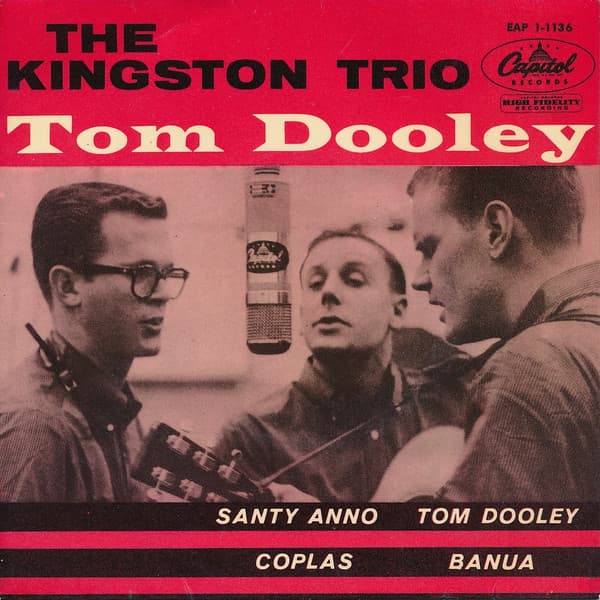
“Tom Dooley”: A Folk Ballad’s Tragic Echoes Through Time
Ah, for those of us who remember the late 1950s, the airwaves were a tapestry of evolving sounds, but amidst the nascent rock and roll, there was a resurgence of something more… earthy, more rooted in the American narrative. And perhaps no song captured that spirit, or indeed the public’s imagination, quite like The Kingston Trio’s indelible rendition of “Tom Dooley.” It wasn’t just a hit; it was a phenomenon, soaring to the very pinnacle of the charts, reaching number 1 on the Billboard Hot 100 in November of 1958. This wasn’t merely a catchy tune; it was a dark, haunting echo from America’s past, presented with a polished, accessible charm that belied its grim subject matter.
The story of “Tom Dooley” is not a product of a songwriter’s imagination, but a chilling chapter ripped from the annals of American true crime. It harks back to an actual murder that transpired in Wilkes County, North Carolina, in 1866. Thomas “Tom” Dula, a Confederate veteran, was accused and ultimately convicted of the murder of Laura Foster, his lover. The story, rife with infidelity, betrayal, and a desperate flight from justice, captivated the nation even then. It quickly seeped into the local folklore, passed down through generations in the form of ballads and oral traditions. These were the kind of stories that were whispered around campfires, sung on front porches, and embedded in the very fabric of Appalachian life. The raw, unvarnished details of lust, murder, and inevitable retribution found their perfect vessel in the simple, yet profound, structure of a folk song.
What The Kingston Trio did so masterfully was to take this raw, untamed folk narrative and refine it without stripping away its soul. Their arrangement was clean, their harmonies tight, and their delivery earnest. They didn’t invent the song; they rediscovered it, dusted it off, and presented it to a generation perhaps hungry for authenticity amidst the growing commercialism of pop music. Before them, other folk artists had performed versions of the ballad, but it was the Trio’s version, from their debut self-titled album, “The Kingston Trio,” that truly resonated. They transformed a regional curiosity into a national anthem of folk revival.
The meaning of “Tom Dooley” is multifaceted, resonating with themes that are as old as humanity itself. At its core, it’s a cautionary tale, a stark reminder of the consequences of passion gone awry and the inexorable march of justice. It speaks to the fragility of life, the swiftness of fate, and the weight of a guilty conscience. For many, it also encapsulated a certain romanticized view of a bygone era – an America of simple pleasures and harsh realities, where justice was often swift and brutal. Yet, beneath the surface, there’s also a tragic beauty to the song, a mournful acknowledgment of human frailty and the enduring power of a story well told.
Beyond its chart success and grim narrative, “Tom Dooley” played a pivotal role in shaping the American musical landscape. It wasn’t just a hit; it was the song that truly ignited the American folk music revival of the late 1950s and early 1960s. Suddenly, record labels and radio stations realized there was a vast, untapped audience for music that wasn’t necessarily rock and roll or Tin Pan Alley pop. It paved the way for artists like Joan Baez, Bob Dylan, and countless others who would go on to define an era of socially conscious, lyrically driven music. For those of us who lived through that time, “Tom Dooley” isn’t just a song; it’s a doorway back to a time when music could be both entertaining and profoundly meaningful, a testament to the enduring power of a simple melody and a tragic tale to capture the hearts and minds of a nation. It still evokes a pang of recognition, a shiver of remembrance, for a simpler, yet in some ways more profound, musical age.